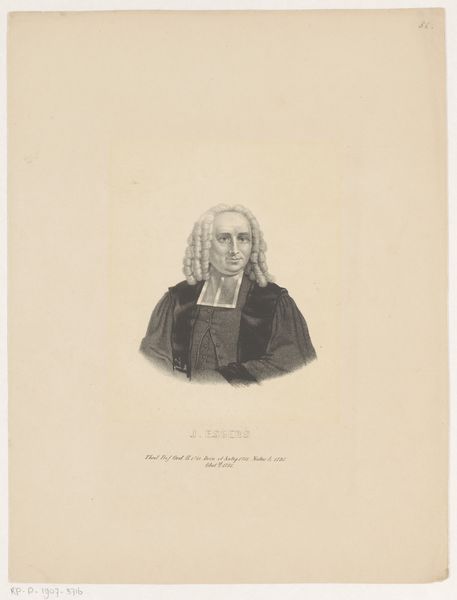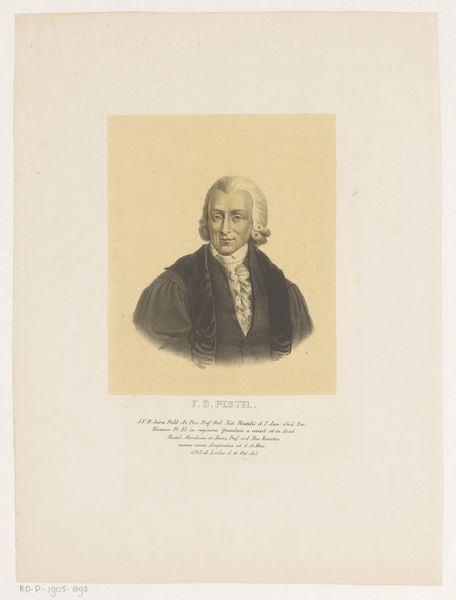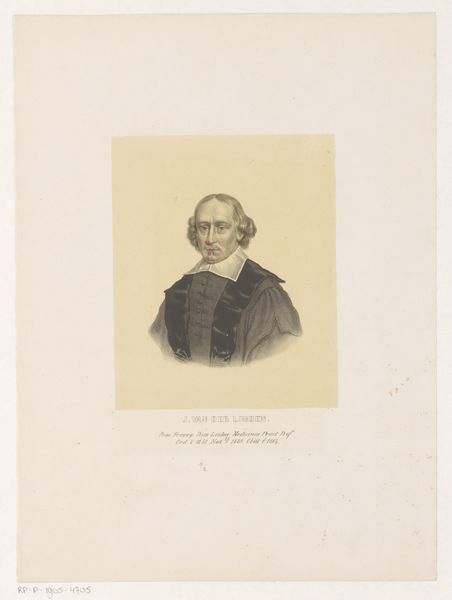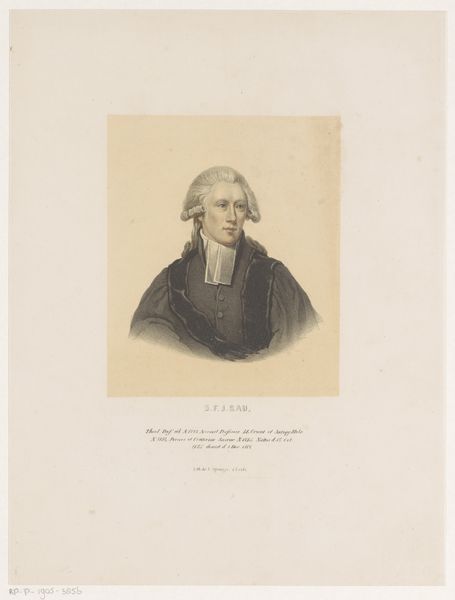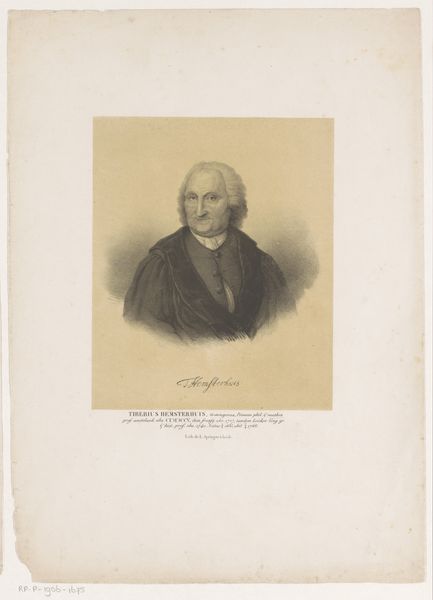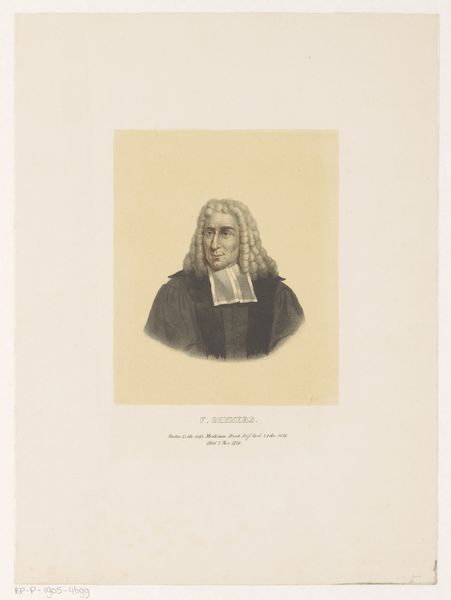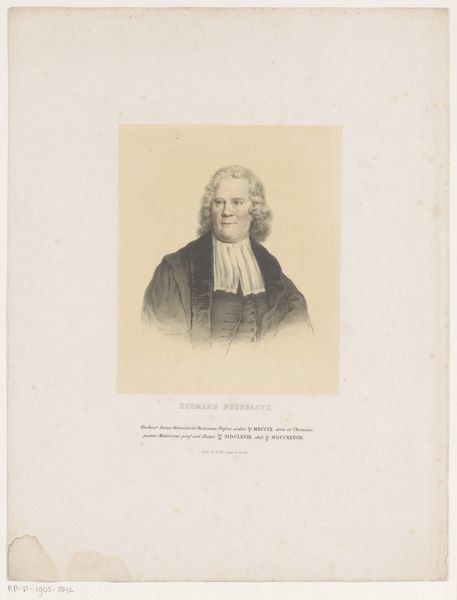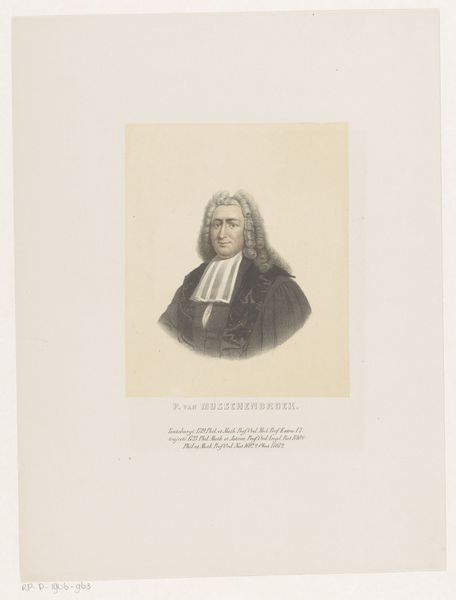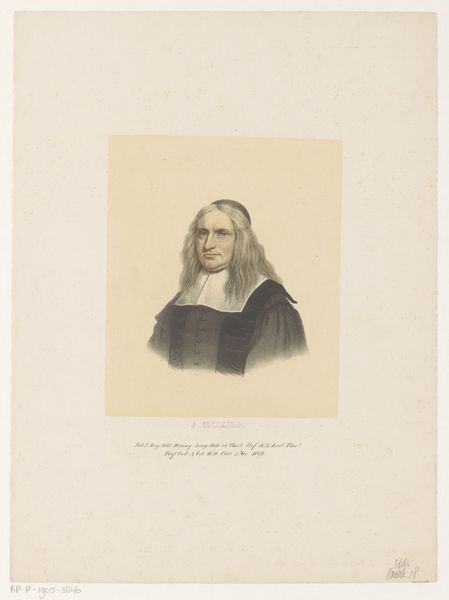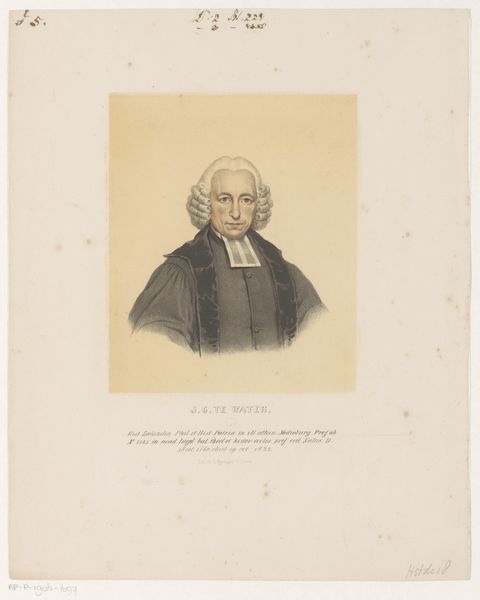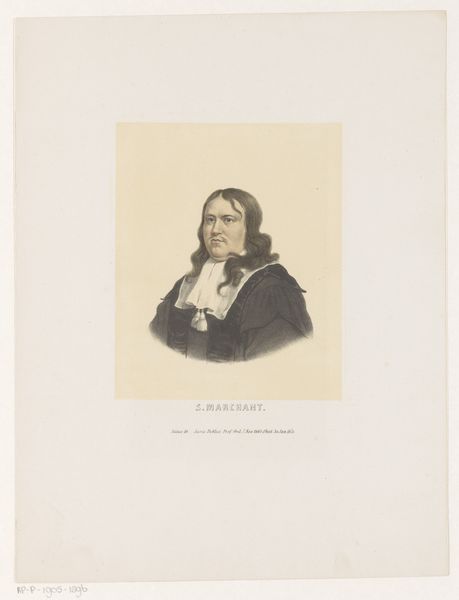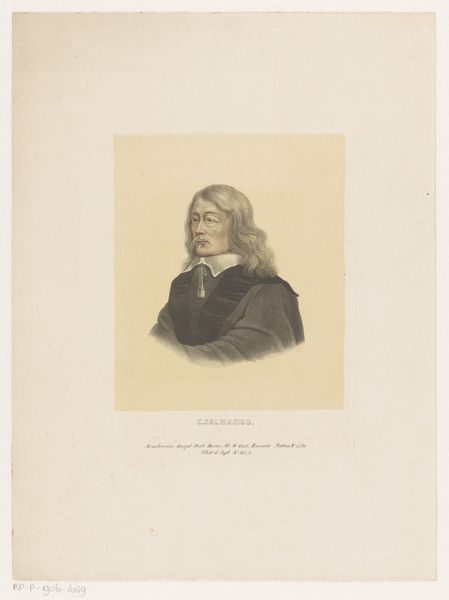
print, engraving
#
portrait
#
pencil drawn
# print
#
pencil drawing
#
line
#
history-painting
#
academic-art
#
engraving
#
watercolor
Dimensions: height 358 mm, width 271 mm
Copyright: Rijks Museum: Open Domain
Leendert Springer made this portrait of Adolph Vorstius using lithography, a printmaking process based on the simple principle that oil and water don't mix. The image begins with a polished slab of limestone, its smooth surface carefully prepared to receive a greasy crayon or ink. The artist draws directly onto the stone, and then treats it with a chemical etch. When dampened, the stone repels ink in the areas not drawn upon, allowing for the image to be printed. This portrait, likely printed in multiple impressions, reflects the rise of mass media in the 19th century. Consider how this differs from the unique, hand-wrought quality of a painting or engraving. Lithography allowed for images to be reproduced quickly and affordably, catering to a growing demand for portraits and illustrations. The process democratized image-making, yet it also introduced new questions about authorship and originality. By understanding the techniques of lithography, and how these processes have imbued the artwork with social and cultural significance, we can begin to see the complex relationship between art, labor, and consumption.
Comments
No comments
Be the first to comment and join the conversation on the ultimate creative platform.

